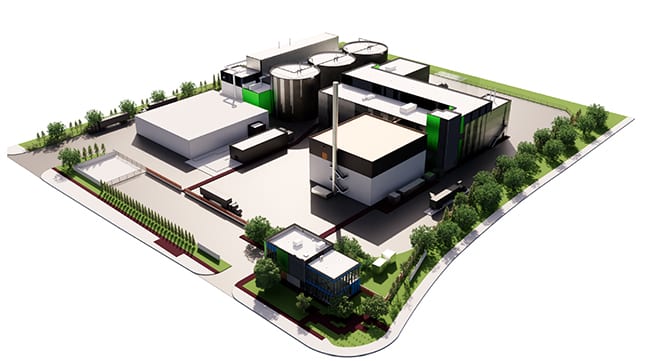Peel Region Anaerobic Digestion (AD) Facility

Location: Brampton, Ontario
Engineering: HDR
Owner/Operator: Region of Peel
HGC was retained to assess the potential environmental noise impact from a proposed Anaerobic Digestion Facility. The goal of the study was to identify the extent of noise control measures needed for the site in order to meet the Ontario Provincial noise limits.
Description of the Facility & Surrounding Area
When operational, the proposed waste-to-energy plant will annually convert about 120,000 tonnes of organic waste to reusable gas, with the expectation of diverting 75 per cent of the garbage produced in the area from landfill by 2034. . The properties immediately surrounding the proposed site are zoned for industrial use, and do not allow for noise-sensitive uses (e.g. residences, health care facilities etc.). The nearest residential homes or other noise-sensitive places are located at distances of more than one kilometer. The noise impact of the site was expected to be minimal at those areas. No noise control measures would be needed to meet the noise limits at any existing noise-sensitive location.

However, the Official Plan of the City of Brampton acknowledges that the adjacent industrial lands may be converted into mixed-use areas in the future, which may include noise-sensitive residential developments. Therefore our assessment factored-in this consideration.
The site is located within the City of Brampton’s industrial/commercial zone at 125 Orenda Road. The facility, when operational, will run 24-hours a day, 7 days a week and process organic waste to produce natural gas. The primary sound sources will be several air-blowers, rooftop ventilation and cooling equipment, and trucks delivering materials to unloading bays on the south side of the production building.
Sound Level Criteria and Analysis
The analysis was based on a review of the project drawings and sound emissions levels of the equipment (preliminary selections) provided by HDR.
The applicable sound level limits, for the purposes of this assessment, were established in accordance with The Ontario Ministry of the Environment, Conservation and Parks (“MECP”) guideline NPC-300. The guideline defines three classes of acoustical environments depending on the presence of background sound, referred to as Class 1, Class 2 and Class 3 areas. The acoustical environment near the proposed site is best characterized as a Class 1 area as the background sound is dominated by substantial traffic from nearby roads. The exclusion limits applicable to Class 1 areas are 50 dBA during daytime hours (7:00 – 23:00) and 45 dBA during nighttime hours (23:00 –7:00)
To determine whether the background sound levels are greater or less than the exclusion limits above, HGC modelled the background sound levels from road traffic, based on hourly traffic volumes, using a computer algorithm. Traffic volumes for nearby Roads were used as input, which were obtained from the City of Brampton. .
Noise Impact Study Conclusion
Our study and modelling found that the sound levels from the proposed facility would be well within the applicable noise limits at the existing assessment locations. However, noise control measures would be required for the facility to meet the noise limits at locations representing the potential future mixed-use development. As a result, HGC identified the equipment requiring noise abatement and developed preliminary noise control recommendations
Acoustical consulting services delivered:
- Employed predictive analysis to determine the anticipated offsite sound levels resulting from the future operations of the facility in neighboring industrial lands which may eventually be converted into mixed-use areas, and include noise-sensitive residential developments
- Evaluated the anticipated sound levels with respect to the environmental noise assessment criteria of The Ontario Ministry of the Environment, Conservation and Parks (“MECP”) noise guideline NPC-300
- Identified whether noise control measures may be needed, and develop recommendations and specifications for such measures, as appropriate.
